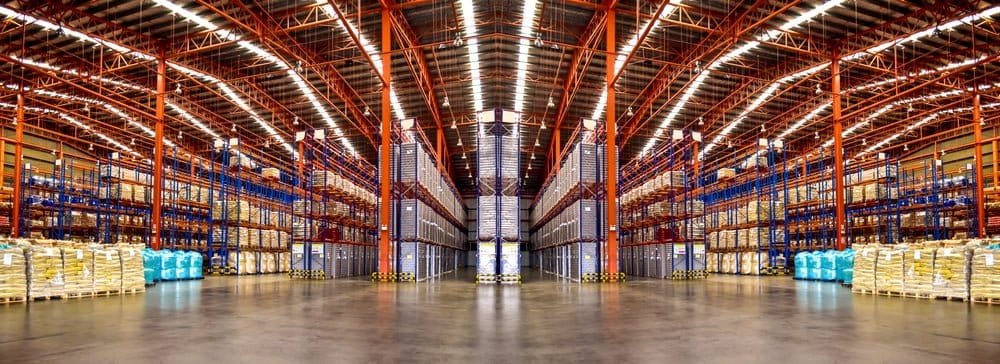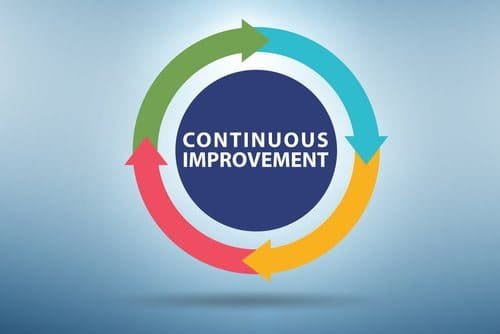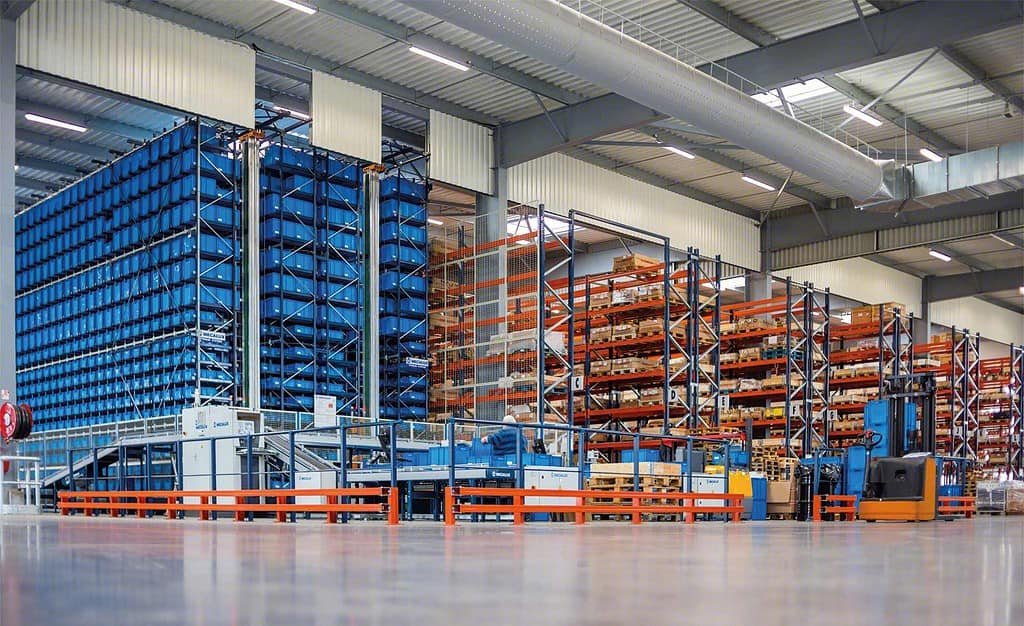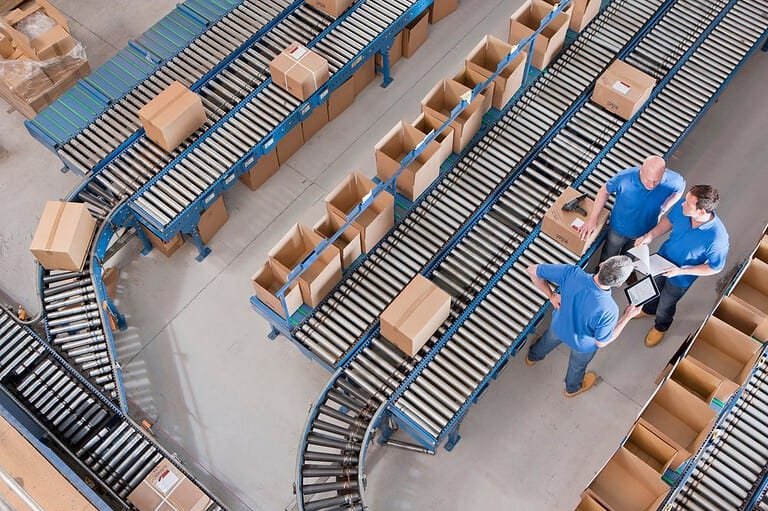The Definitive Blueprint for Warehouse Organization
If you aren’t working in the cleanest and most organized operation in the supply chain – why not? Learn about warehouse organization strategies proven to streamline operations and skyrocket efficiency.

This comprehensive guide unveils a master plan for organizing your warehouse with precision—from leveraging advanced storage solutions to harnessing the power of technology and human ingenuity.
As you navigate the chapters ahead, you will discover not just how to tidy up your space, but how to transform it into a model of efficiency and a bastion of employee morale.
With the insights and strategies laid out in this guide, prepare to turn your warehouse into the cornerstone of a robust, resilient, and responsive supply chain.
Have you ever walked into an immaculate Wal-Mart? It has clean floors and ceilings, bright lights, and organized shelves. The bathrooms smell like Clorox. The environment is perfect for impulse buying and long shopping excursions.
Now, the opposite—how about a poorly run Wal-Mart? Dirty and unorganized carts in the parking lot, gum and stains on the floor, poorly vented restrooms. Do you want to hang around or get in and get out without touching anything?
Which one would you rather shop at? Which one would you rather work at?
Embracing 5S: The Framework for Sustained Success
One of the best approaches if you know how to properly use it, which most people do not. I see a lot of empty 5S boards abandoned due to mis-management. For an in-dept 5S review, click below. For a high-level overview, read on OR skip this section.
In the quest for warehouse optimization, the 5S methodology stands out as a beacon of organizational excellence, derived from five Japanese terms that translate to sort, set in order, shine, standardize, and sustain.
This time-tested approach isn’t just about tidiness—it’s a comprehensive process that fosters an environment of continuous improvement and efficiency at the core of warehouse operations.
Sort (Seiri)
The first “S” stands for sorting, a critical step in decluttering the warehouse and removing unnecessary items. It’s about distinguishing between what is essential and what is superfluous, ensuring that every tool, item, and piece of equipment has a clear purpose. This not only frees up valuable space but also reduces the time spent searching for materials, leading to a streamlined workflow.
Set in Order (Seiton)
Setting in order involves arranging necessary items to be easily accessible and labeling them accordingly. It’s about intuitive placement that aligns with workflow patterns, ensuring that the most frequently used items are at hand and everything has a designated place. This strategic organization minimizes movement and saves time, propelling productivity forward.
Shine (Seiso)
The shine phase is about maintaining cleanliness and conducting regular inspections. This step ensures that the work environment is conducive to efficiency and safety. Regular cleaning schedules not only preserve equipment and space but also instill a sense of pride and ownership among staff, which is instrumental in maintaining high standards of organization.
Standardize (Seiketsu)
Standardization is about establishing norms and conventions that ensure the first three “S” steps are consistently applied. By developing standard operating procedures for organization and cleanliness, you embed these practices into the daily routine, making them second nature to the team. This includes visual cues, checklists, and schedules that guide the staff and maintain the established order.
Sustain (Shitsuke)
The final “S” is arguably the most challenging—sustaining new practices over time. This requires ongoing training, discipline, and cultivating a workplace culture that values organization as a key to operational success. Regular reviews, audits, and feedback loops are vital in making 5S a lasting part of the warehouse ethos, not just a one-off project.
By embedding the 5S philosophy into the very DNA of your warehouse operations, you create a resilient structure that not only organizes the present but also adapts to future demands.
In the ever-evolving landscape of warehouse management, 5S is a testament to the power of order and efficiency, providing a clear pathway to operational excellence and sustained competitive advantage.
Setting the Stage for Warehouse Efficiency

Assessing and Redefining Your Warehouse Floor Plan
In the grand theater of warehouse logistics, your floor plan is the stage upon which the drama of daily operations unfolds. Achieving optimal process flow begins with meticulously assessing your current layout and identifying bottlenecks that hamper efficiency and spaces that underperform.
Redefining your warehouse floor plan is not about incremental adjustments but a revolutionary reimagining of space utilization. Due to the organization, labeling, and cleanliness, you can tour any area and know exactly what’s going on.
A Systematic Approach to Inventory Management
The warehouse optimization backbone is a systematic inventory classification and management approach. By categorizing inventory based on turnover rates, value, and demand variability, warehouses can unlock efficiencies and reduce wastage.
Employing methods like ABC analysis prioritizes items for strategic placement and informs purchasing decisions and stock-level management. With this systematic approach, inventory management evolves from a reactive chore to a proactive strategy, ensuring the right stock is at the right place and time every time.
Innovative Storage Solutions and Utilization
Smart Storage Automation for Maximal Capacity and Flexibility
Smart storage automation revolutionizes warehouse efficiency by maximizing capacity and providing unprecedented flexibility. For instance, automated storage and retrieval systems (AS/RS) are transforming static shelving into dynamic hubs of activity.
They can adjust to real-time inventory needs, reclaiming vertical space and reducing the warehouse footprint. In addition, they only contain ship-ready products, which are de-trashed and damaged and ready to ship.
When combined with sophisticated management software, these intelligent systems deliver a scalable solution that adapts to changing inventory profiles and seasonal demands, ensuring that storage space is always an asset, never a limitation.
Vertical Versus Horizontal Storage Solutions
The debate between vertical and horizontal storage solutions concerns space versus accessibility. Vertical storage capitalizes on unused air space and is a game-changer in facilities with limited footprints.
Conversely, horizontal storage offers easy access and is ideal for bulky items or high-velocity stock. The key lies in tailoring the solution to your warehouse’s unique needs, balancing space maximization and operational efficiency.
By integrating the best of both worlds, warehouses can craft a storage ecosystem that is both dense and elegant.
Operational Best Practices

Integrating a State-of-the-Art Warehouse Management System
The heart of a modern warehouse’s operational best practices beats with the rhythm of its Warehouse Management System (WMS). A state-of-the-art WMS doesn’t just track inventory; the central nervous system orchestrates every move, scan, and transaction.
It’s a digital maestro that precisely conducts the flow of goods, offers real-time insights, and leverages historical data to forecast and plan. In a world where time is currency, a robust WMS is an investment that pays dividends in efficiency and reliability.
Streamlining Receiving and Returns
A streamlined receiving and returns process is vital to maintaining warehouse operations’ integrity. Best practices in this area center on accuracy and speed.
Technology plays a pivotal role here—barcode scanning, RFID tags, and automated data capture ensure that goods are processed and made available for sale or restocking with minimal delay.
Additionally, a well-orchestrated returns process is essential in today’s e-commerce-dominated market, turning potential losses into opportunities for customer service excellence and inventory optimization.
Maintenance, Safety, and Compliance

Regular Maintenance Routines That Cut Costs
A proactive maintenance schedule is not just about prevention; it’s about performance. By preemptively addressing wear and tear, warehouses can avoid the steep downtime costs and extend their equipment’s lifespan.
This regular maintenance rhythm should be music to the ears of warehouse managers, as it plays a crucial role in cost control and operational continuity. A commitment to routine care is the cornerstone of a facility that’s not only compliant with safety regulations but also primed for peak performance.
Enhancing Safety Through Strategic Organization
Warehouse safety is a mosaic of many factors, with strategic organization and clear signage being the cornerstones. A well-organized warehouse minimizes hazards, ensures clear pathways, and facilitates emergency responses.
Clear, concise signage complements this by providing guidance and information, reinforcing safety protocols, and navigating staff and visitors through the complexity of a bustling warehouse. Together, they form a framework that protects people, products, and profits.
Warehouse Compliance
Warehouse compliance refers to adhering to standards, regulations, and best practices designed to ensure warehousing facilities’ safe, efficient, and lawful operation.
Depending on the nature of the goods stored, this can include everything from labor laws and employment standards to customs and import regulations.
Warehouses must also comply with industry-specific standards, such as food safety regulations for perishable items or hazardous material handling procedures for chemicals.
Failure to comply with these regulations can result in severe penalties, including fines, loss of licenses, or even criminal charges.
Furthermore, environmental compliance is increasingly becoming a priority for warehouse operations. This involves implementing practices that minimize environmental impact, such as waste management systems, energy-efficient lighting and machinery, and measures to prevent soil and water contamination.
Software and Technology

Navigating the Software Solutions Landscape
In the digital age, the right software solution can differentiate between a simply functioning warehouse and one that excels. Navigating the software solutions landscape is about matching your operational needs with the right mix of functionality and scalability.
Inventory management systems form the bedrock of this technological foundation, providing the visibility and control necessary for precision stocking and order fulfillment.
But the vision doesn’t stop there—comprehensive enterprise solutions encompass every facet of operations, from resource planning and customer relationship management to supply chain logistics, creating a cohesive and responsive digital ecosystem that empowers warehouses to surpass their operational goals.
AI and IoT in Revolutionizing Warehouse Organization
Artificial Intelligence (AI) and the Internet of Things (IoT) are not just buzzwords; they are the twin engines driving the future of warehouse organization. AI uses predictive analytics and machine learning to optimize everything from inventory levels to labor distribution, turning vast data streams into actionable insights.
Meanwhile, IoT devices offer real-time tracking and environmental monitoring, ensuring a constant pulse on the warehouse’s physical and operational status. AI and IoT are transforming warehouses into intelligent spaces that anticipate needs, preempt challenges, and adapt to change with unparalleled agility.
People: Training and Culture

Building a Culture of Organization: Training Staff & Accountability
The cornerstone of a well-oiled warehouse is its people. Building a culture of organization starts with comprehensive training programs that empower staff with the knowledge and skills necessary to maintain efficiency and adapt to new systems.
But beyond training, fostering a culture of accountability where each team member takes ownership of their role and understands the impact of their actions on the broader operational tapestry is crucial.
When staff are engaged and invested, the warehouse not only runs smoother but also becomes a more fulfilling place to work.
Employee Satisfaction as a Driver for Organizational Success
Employee satisfaction is an often underestimated driver of organizational success. A content and motivated workforce is more productive, accurate, and innovative.
Ensuring employee satisfaction means addressing ergonomics, providing growth opportunities, and recognizing achievements. When employees feel valued, they become the champions of your warehouse’s mission, striving not just to meet expectations but to exceed them.
Advanced Analytics and Continuous Improvement

The Power of ABC Analysis and Cycle Counting
Inventory is the lifeblood of any warehouse, and managing it effectively is paramount. ABC analysis—a technique that categorizes inventory based on importance—and cycle counting—an approach to inventory auditing—combine to form a powerhouse for inventory optimization.
These methodologies harness advanced analytics to provide a clear picture of inventory turnover and accuracy, facilitating strategic decision-making that ensures the right products are available at the right time.
Audits, Reviews, and Metrics: The Continuous Loop
The journey towards warehouse perfection is a continuous loop of audits, reviews, and metrics. Regular audits keep processes sharp and compliant, reviews ensure strategies remain aligned with objectives, and metrics provide the quantitative feedback necessary for data-driven decision-making.
This trinity forms a cycle of continuous improvement where every aspect of the warehouse is perpetually refined, ensuring the organization meets today’s standards and is primed to embrace tomorrow’s opportunities.
Next-Gen Warehouse Organization

As we edge closer to a new era of logistics, the future of warehouse organization is poised to be revolutionized by a suite of exciting trends that blend operational savvy with technological breakthroughs.
The warehouses of tomorrow are shaping up to be ecosystems of hyper-efficiency, driven by smart automation, AI-powered analytics, and sophisticated robotic systems that promise to turn today’s best practices into tomorrow’s standards.
Imagine drones conducting inventory audits, augmented reality for space optimization, and machine learning algorithms predicting stock levels with uncanny accuracy. These are not far-flung fantasies but imminent realities.
Flexibility and Adaptability
But with great technology comes the great responsibility of adaptability. Preparing for the future means adopting agile organizational strategies that can pivot at the speed of innovation.
It involves fostering a culture that embraces change, training teams to leverage new tools, and continually revising operational blueprints to integrate the next wave of organizational tools.
In this transformative landscape, the warehouses that will thrive see organization not as a fixed state but as a continuous, evolving process—a process that’s attuned to the ebbs and flows of a rapidly changing industry.
So as we look to the horizon, let’s not just anticipate the future; let’s actively prepare to meet it, equipped with the insight and flexibility to turn these upcoming advancements into our competitive edge.
Conclusion
As we bring our journey to a close, it’s evident that the path to a well-organized warehouse transcends mere cleanliness and order—it’s about crafting a dynamic environment where efficiency, technology, and human ingenuity intersect to create a powerhouse of productivity.
The strategies and insights shared here are your tools to not only elevate your warehouse organization to new heights but also to forge a workspace that is as smart and agile as the market demands.
With the blueprint in your hands, the next move is yours: to implement, to innovate, and to lead your warehouse into a future where every square foot is a testament to the art of organization and every process a benchmark for the industry.







